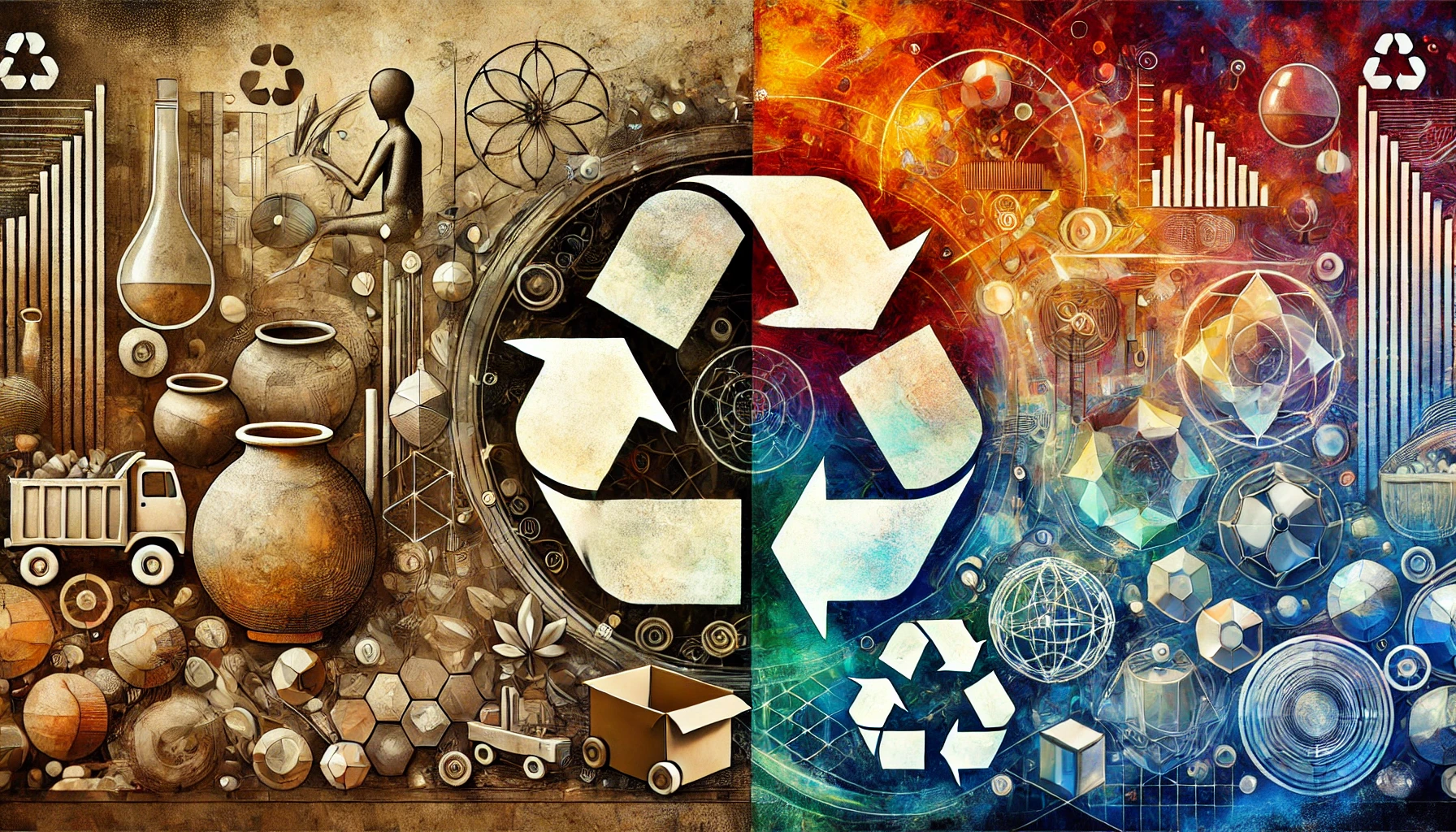A Brief History of Separated Recycling

August 06, 2024
Recycling is a big part of the waste management of our world, trying to address resource conservation, pollution reduction, and climate change mitigation. Separated recycling is essentially sorting different types of garbage for processing depending on the material an object is made of. This has evolved greatly over time, leading to the development of cutting-edge technologies and global awareness.
Early recycling
The idea of recycling is not entirely new. Throughout history, we can point to many examples where objects made of the same material were collectively collected, and then the base material was reused to create more objects. The Romans would melt down ceramic and bronze objects to create other pottery and bronze-made items. In 11th-century Japan, paper was recycled by shredding old archives and records and remanufacturing them into new sheets. More recently, during World War II, a lot of effort was put on the Allies' side to recycle scrap metal and rubber for the war effort.
Early recycling practices were relatively sparse and mostly linked to resource conservation, but the industrialization era started and increasingly impacted the environment.
The Birth of Modern Recycling
Modern recycling can be traced back to the novel “Silent Spring” by Rachel Carson, published in 1962. While the book is about the negative environmental effects of the extensive use of modern chemicals, especially pesticides, it started a new environmental movement aimed at a cleaner world and reducing mindless resource dissipation. However, the book faced numerous challenges from the chemical industry, which was quick to deny its facts and threatened legal action against its publisher.
April 22, 1970, marks the first Earth Day, an event highlighted by marches and activities supporting environmental reform across the US, which is now a worldwide tradition. In the same year, the now widely recognized symbol for recycling was created by Gary Anderson, representing the recycling loop: Reduce, Reuse, Recycle.
This symbol represents the continuous cycle of reducing waste, reusing materials, and recycling them to prevent resource depletion. The simplicity and universal recognition of this symbol play a key role in raising environmental awareness globally.
In the 1970s, the University of Oregon was among the first entities to use a color-coded garbage collection system, with bins for categories such as Paper, Metal, Glass, and Plastics. In 1978, the municipality of Palo Alto began testing curbside recycling collection for newspapers, cans, glass, corrugated cardboard, motor oil, and small scrap metal items. This system would expand in the next few years to the entire residential area.
In 1983, Ontario Municipality implemented a single-stream recycle system called Blue Box, which collects most recyclable materials in blue containers. The system would continue to expand to Canadian municipalities in the following years.
In Europe, the leader of recycling has undoubtedly been Germany, with the adoption of the “Green Dot” system in 1991, which forced businesses to make product packaging recyclable and used a green label on them to indicate recyclability. The system later expanded to the majority of EU countries with vast positive results. A few years later, Germany adopted the Closed Substance and Waste Management Act (1996), which made waste sorting mandatory for households and businesses. Germany continues to lead in this area, having one of the highest recycling rates in the world (around 61% in 2023).
The Current Situation in Recycling
Today, recycling has evolved to be a critical part of the waste management process in most of the world. The recycling industry has significantly advanced, driven by technological improvements, policy changes, and increased environmental awareness.
Technological advancements:Modern recycling has greatly improved the automation of waste sorting by using the latest technologies. Optical sorters use light in different spectrums and camera systems with machine learning algorithms to successfully separate different materials. Magnetic separators extract metals from the waste flow, and robots driven by AI are developed to complete the sorting process.
Policy changes:Governments worldwide are adopting policies enforcing waste sorting and circular economy principles. The European Union’s “Waste Framework Directive” is concerned with “measures to protect the environment and human health by preventing or reducing the adverse impacts of the generation and management of waste, and by reducing overall impacts of resource use and improving the efficiency of such use.”
Environmental awareness:Governments and NGOs are actively promoting numerous programs that teach citizens how to use recycling bins and color-coded trash bins effectively. Many schools focus on recycling education programs, and there has been an increased public interest in this matter.
Despite these advancements and efforts, there are still issues related to improper sorting, waste contamination, and the efficiency of recycling processes for some materials. Thus, ongoing investment in recycling technologies and continued research are required to address these challenges.